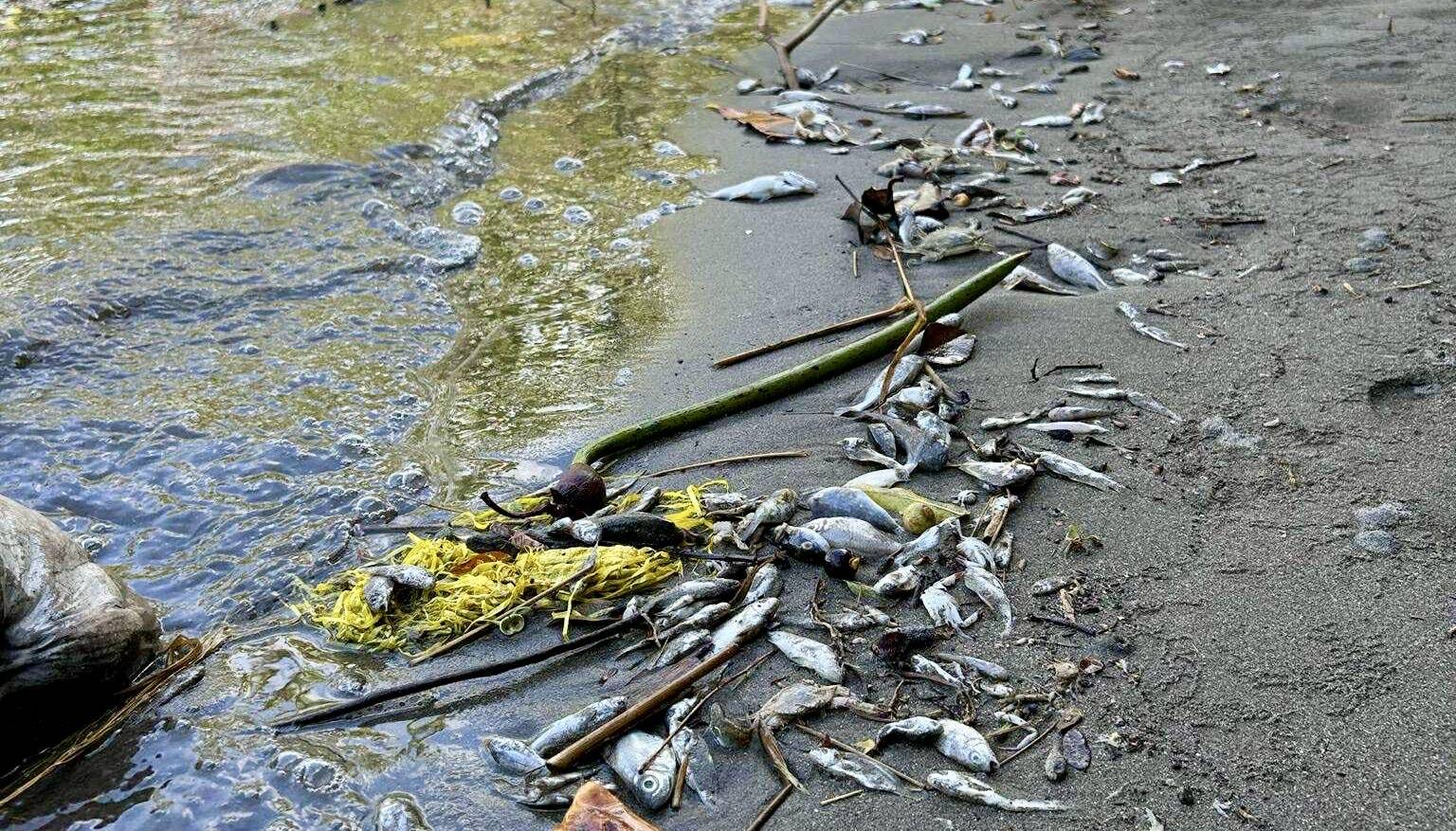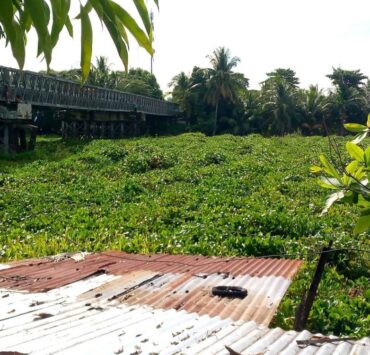2 tons of dead fish washed ashore in 2 Camarines Sur towns

LEGAZPI CITY—Thousands of dead fish of different species were washed ashore in two coastal towns of Camarines Sur over the weekend, the cause of which was still to be determined by government experts.
According to the Bureau of Fisheries and Aquatic Resources (BFAR), at least 2 tons of various fish species and crustaceans were found along the shores and shallow waters of Calabanga and Tinambac towns as of Sunday.
The incident was first reported in Calabanga in the morning of May 23, where approximately 500 kilograms of assorted dead fishes (sole fish, striped mackerel, reef fishes, mullet, puffer fish, and even shrimps and crabs) were found on its shore, according to Wheng Bricia-Briones of the BFAR in a phone interview on Monday.
Large concentrations of fish carcasses were seen near Kawit Island located off Barangay Cagsao in Calabanga and along the shoreline of Sitio Bugiw in Cagsao.
A BFAR technical team was sent to conduct water quality assessments in both affected and unaffected areas, measuring dissolved oxygen, pH levels and turbidity.
However, the “initial results show that all parameters remain within normal levels,” Bricia-Briones told the Inquirer.
Fish samples have been collected and sent to BFAR’s central laboratory in Manila for cyanide testing.
“As of now, the exact cause of the fish kill remains undetermined and the investigation is ongoing,” she added.
In Tinambac, the fish kill has impacted several barangays, including Bagacay, New and Old Caaluan, Santa Cruz, Filarca, Sogod and Mananao.
Assistance
Bricia-Briones said that given the large volume of dead fish that might have come from the two towns’ fishing grounds, they had to assess how many fisherfolk have been affected.
Bricia-Briones assured that assistance would be provided to fishers faced with dwindling or no catch at all.
“We are in close coordination with the local government units (LGUs) through their municipal agriculture offices to identify affected fisherfolk,” she said.
Bricia-Briones added: “Until the cyanide test results are available, we strongly advise the public not to consume any of the dead fish.”
She noted that monitoring would continue and reiterated BFAR and the LGUs’ commitment to extend support to affected communities as needed.

















